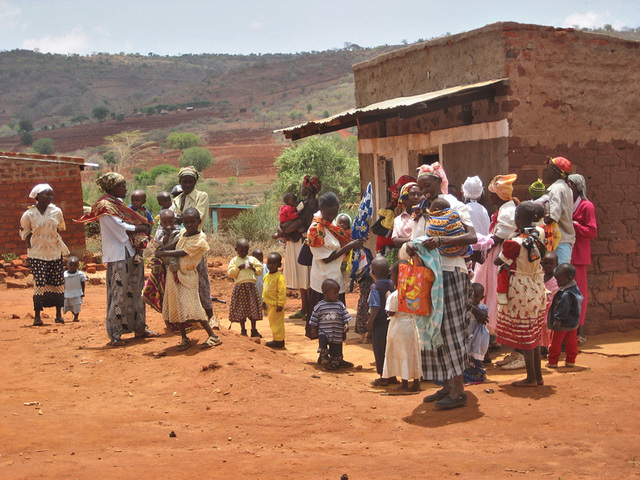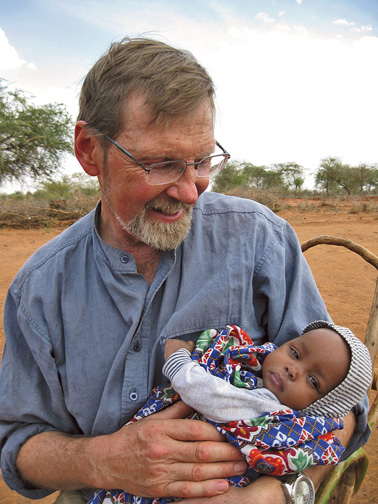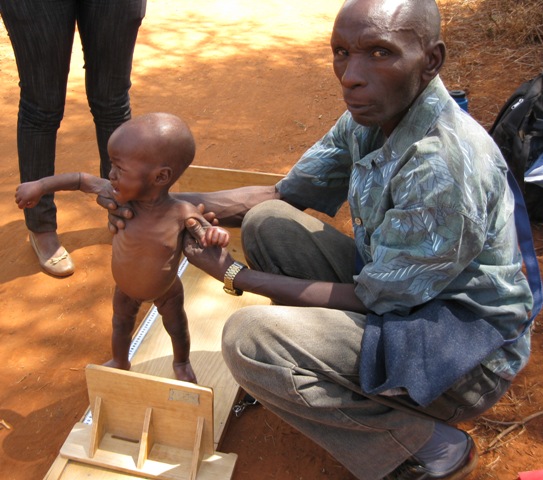In the village of Kisesini, which sits southeast of Nairobi in Kenya’s Yatta District, water is scarce and brackish and food mostly comes in the form of nutrient-empty porridge. Breast milk can be the difference between life and death for the population’s youngest members. Nearly half the children in the region under the age of 5 are malnourished. Breast milk is one of the few reliable sources of sustenance women in Kisesini have for their children. And so when a woman approached Dr. Angelo Tomedi in the village’s health dispensary and asked him for medicine that would dry up her breast milk, he knew something was wrong.“Nobody stops breast-feeding like that,” he says. He asked her why she had made the request, and she answered, “There’s not a baby to breast-feed now.”Her child had died the day before while she was out walking. It happened with the inexplicable suddenness that’s all too common in the region. The infant had been sick. Then she realized it had stopped breathing.“So she just walked back home and buried the baby,” Tomedi says, “and came the next day to get the medicine.”It’s stories like this that Tomedi is trying to prevent through his organization Global Health Partnerships (GHP), of which he is president and co-founder. (Though there are a few organizations with the same name, Tomedi’s is independent.) The Albuquerque nonprofit is working to improve health care and nutrition in eastern Kenya. To date, GHP has helped open a health dispensary in Kisesini, which serves 75 villages and 36,000 people. It’s trained 150 community health workers within those villages. And it continues to provide supplemental medical supplies and emergency food rations to the area. The Distance Between Two Points Health care in Kenya is difficult to find. Facilities are many miles from one another, and the great majority of people, especially in remote villages, are without transportation. The closest hospital to Kisesini is 37 miles away. Six hundred female basket-makers from the area gathered more than a decade ago with the hope of building a health dispensary in their own village. Putting a portion of their basket sales into a fund for a dispensary, it took them eight years to gather enough money to build most of the structure.Tomedi is also the director of the Albuquerque fair trade nonprofit store Peacecraft. One of the vendors Peacecraft uses is a fair trade organization called Crafts of Africa. The Kisesini basket-makers belong to the organization. In April 2006, the UNM Fair Trade Initiative invited Peter Wahome, director of Crafts of Africa, to come to Albuquerque to talk about fair trade. Wahome stayed with Tomedi and spoke of the women’s effort. By early 2007, GHP raised the funding to complete the building and purchase medical supplies and equipment from UNICEF. It took about $58,000, most of which was donated by Our Lady of the Most Holy Rosary, a Catholic church on Albuquerque’s Westside. Once the dispensary was built in the fall, Kenya’s Ministry of Health provided a nurse to work there. GHP provides the salary for a lab technician, which costs about $120 a month.But the dispensary has limits. In Kenya, health facilities are divided into categories, and dispensaries are the most basic. No doctors work at them, only a nurse, and minimal treatments can be performed within their walls. Some health centers can perform vaginal deliveries and have the capacity for overnight care.Resources at those places are stretched. Tomedi describes one of his visits to a nearby health center, where he says he arrived to find the place devoid of antibiotics. “This is like taking care of all of Santa Fe with no antibiotics in the whole place.”The dispensary he helped build faces the same problems. And although the Ministry of Health provides the dispensary’s nurse with a supplies budget, it’s never enough. So GHP helps make up the difference.GHP does its best to keep the dispensary stocked, but getting to the facility is still a problem for many villagers. Since it covers 75 villages, some people have to walk two hours in one direction just to get there and hope they can be helped.David Broudy, an epidemiologist who works for the New Mexico Department of Health, sits on GHP’s board of directors. He’s traveled to Kenya a couple of times with the organization. He recounts an instance this summer when a woman came to the dispensary looking for help, but the staff didn’t have the resources she needed. “She was pregnant,” he recalls. “When she came to the clinic, her water had already ruptured. She was on the verge of delivering but the labor wasn’t progressing.” He explains how any difficulties in labor are dangerous in the villages because women have to walk so far to find health care. When pregnancies go wrong, both the woman and child often die.The dispensary didn’t have the equipment for the delivery, so the staff decided to take her to the nearest hospital, which was about an hour and a half away by car. GHP had purchased a used van for the dispensary, so Broudy piled in with the woman, her sister and another relative.“We took off, turned off the road, and the axle literally fell off the van,” he says. “And you know, you can’t call AAA; there’s nobody else with a car.” They weren’t far from a paved road, so they gave her bus fare. “It was all we could do. And it was the most terrible, helpless feeling that we couldn’t do anything for her. She was hardly better off having come to the clinic.”But even with all the devastation, Broudy says GHP has been able to see the difference it’s made. He tells a story about the opening day of the dispensary in 2007. A woman was in labor, and it was believed to be twins. The first head was already appearing when they were called to the scene. Even thought the first baby was breached and distressed, they were able to resuscitate him, and the second baby, also a boy, lived as well. When Broudy went back this summer, he saw the woman and her two sons. Without the dispensary, he knows, none of them might have survived. When the Rains Come Eastern Kenya and New Mexico have a few things in common. Both are arid and sun-seared. But in eastern Kenya, if the rains don’t come, crops fail, people have to dig deep for water, and mothers walk to houses begging for food.Kisesini is usually hit by two wet periods a year—the “short rains” from mid-October to December and the “long rains” from mid-March to the end of May. But the region has been plagued by drought for the last two years.Even when the rains come, water is hard to reach. There’s no well in the area, so villagers make daily trips to the nearest dried stream beds and dig to find water. In normal years, men dig four to six feet before muddy water begins to pool and they can scoop it into buckets and carry it home. When there’s a drought, they dig 10 feet.Luckily, this fall, the rains started again. When GHP was there this summer, members built a dam across an arroyo about 10 to 12 feet high and several hundred feet wide. By the end of October, the dam was half full.Now GHP is raising money to build drill a well in the area. Albuquerque’s Rotary Del Sol is working with other rotaries in New Mexico and west Texas to gather $50,000 to donate to GHP to drill the well, which will also help with irrigation.For about $25, Tomedi says, the organization can feed one child for a whole month. That number stays with him.“It’s hard to go out and spend $50 on a dinner knowing you could have fed two kids for a whole month on that money,” he says. “It’s culture shock. When you jump in your car and you buy more groceries than you need and you eat more than you need. And you come back, and it makes you ill.”
Dr. Angelo Tomedi says more than 95 percent of the donations given to Global Health Partnerships goes directly into programs in Kenya. To date, the organization has spent more than $150,000 to build, train and feed, based entirely off donations. If you’d like to donate, visit ghp-usa.org or write a check to: Global Health Partnerships, P.O. Box 4385, Albuquerque, N.M. 87196.











